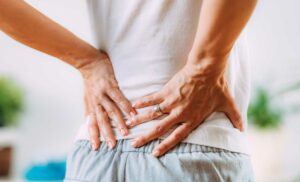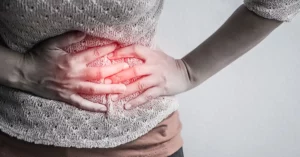Hip flexor and lower back pain are common complaints that affect many individuals, from athletes and fitness enthusiasts to those leading a sedentary lifestyle. These two types of pain are closely interconnected due to the anatomical relationship between the hip flexor muscles and the lower back. In this blog, we will delve into the causes, symptoms, treatment, and prevention of hip flexor and lower back pain.
Contents
- 1 Understanding the Anatomy
- 2 Common Causes of Hip Flexor and Lower Back Pain
- 3 Symptoms of Hip Flexor and Lower Back Pain
- 4 Diagnosis and Medical Evaluation
- 5 Preventing Hip Flexor and Lower Back Pain
- 6 Benefits of Maintaining Healthy Hip Flexors and Lower Back
- 7 The Role of Stretching in Pain Relief
- 8 Conclusion
Understanding the Anatomy
Understanding anatomy is crucial for comprehending the structure and function of the human body. It allows us to grasp how different organs, tissues, and systems work together to maintain life and perform various functions. In this section, we will provide an overview of some essential aspects of human anatomy.
- Cellular Level: The human body is composed of trillions of cells, the fundamental units of life. Cells vary in size, shape, and function, and they come together to form tissues, organs, and organ systems. Major cell types include muscle cells, nerve cells (neurons), epithelial cells, and connective tissue cells.
- Tissues: Tissues are groups of specialized cells that perform specific functions. There are four main types of tissues:
- Epithelial Tissue: Forms the covering and lining of body surfaces, such as the skin and internal organs.
- Connective Tissue: Provides support, protection, and structure to various body parts, including bones, tendons, and ligaments.
- Muscle Tissue: Responsible for movement and includes skeletal, smooth, and cardiac muscle.
- Nervous Tissue: Enables communication within the body and is found in the brain, spinal cord, and nerves.
Common Causes of Hip Flexor and Lower Back Pain

Hip flexor and lower back pain can be caused by various factors, ranging from lifestyle habits to underlying medical conditions. Below are some of the common causes for each type of pain:
- Overuse or Repetitive Strain: Engaging in activities that involve excessive hip flexions, such as running, cycling, or high-impact exercises, can lead to overuse and strain on the hip flexor muscles.
- Tightness and Lack of Flexibility: Prolonged sitting and a sedentary lifestyle can cause the hip flexor muscles to become tight and less flexible, leading to discomfort and a limited range of motion.
- Muscle Imbalances: Weakness or tightness in other muscle groups, such as the glutes and hamstrings, can result in increased stress on the hip flexors during movement.
- Injuries: Sudden movements, falls, or accidents can cause tears or strains in the hip flexor muscles.
- Hip Flexor Tendinitis: Inflammation of the tendons that attach the hip flexor muscles to the bones can cause pain and discomfort.
- Hip Flexor Strains: Overstretching or sudden movements can lead to strains in the hip flexor muscles.
Symptoms of Hip Flexor and Lower Back Pain
The symptoms of hip flexor and lower back pain can vary depending on the underlying cause and severity of the condition. Here are the common symptoms associated with each type of pain:
- Pain in the Front of the Hip: The primary symptom of hip flexor pain is discomfort or pain felt in the front of the hip joint.
- Groin Pain: The pain may also extend into the groin area due to the location of the hip flexor muscles.
- Upper Thigh Discomfort: Pain can radiate down the front of the upper thigh.
- Pain with Hip Flexion: Pain may worsen when lifting the knee towards the chest or performing activities that involve hip flexion, such as climbing stairs or running.
- Stiffness and Limited Range of Motion: Tight or inflamed hip flexor muscles can lead to reduced flexibility and difficulty in performing certain movements.
- Muscle Spasms: In some cases, muscle spasms in the hip flexor area may occur.
- Dull Ache or Sharp Pain: Lower back pain is typically characterized by a dull, aching sensation or sharp, stabbing pain in the lower back region.
- Pain Radiation: The pain may radiate from the lower back into the hips, buttocks, and legs. If the sciatic nerve is affected, the pain may extend down the back of one or both legs, known as sciatica.
Diagnosis and Medical Evaluation

Diagnosing hip flexor and lower back pain involves a comprehensive medical evaluation that includes a thorough history, physical examination, and, in some cases, imaging tests. Here’s an overview of the diagnostic process:
- Medical History: The healthcare provider will begin by asking about your medical history, including any past injuries, medical conditions, and activities that may be contributing to the pain. They will inquire about the specific location, intensity, and duration of the pain, as well as any factors that make it better or worse.
- Physical Examination: During the physical examination, the healthcare provider will assess your posture, gait, and range of motion. They will examine the hip and lower back regions for tenderness, swelling, muscle spasms, and any signs of inflammation. Special tests may be performed to check the strength, flexibility, and stability of the hip and lower back muscles.
Preventing Hip Flexor and Lower Back Pain
Preventing hip flexor and lower back pain involves adopting healthy lifestyle habits, maintaining proper posture, and incorporating exercises to strengthen and stretch the muscles in the hip and lower back regions. Here are some preventive measures:
1. Regular Exercise: Engage in a well-rounded exercise routine that includes cardiovascular activities, strength training, and flexibility exercises. Strengthening the core, hip, and back muscles can provide better support and stability to the spine and hip joints, reducing the risk of pain and injuries.
2. Stretching: Incorporate regular stretching exercises to improve the flexibility of the hip flexors, hamstrings, and lower back muscles. This can help alleviate tightness and reduce the strain on these muscles during physical activities.
3. Maintain Proper Posture: Practice good posture when sitting, standing, and lifting objects. Avoid slouching and excessive forward bending, as this can strain the lower back and hip muscles.
4. Ergonomic Support: Ensure that your workspace, including your desk and chair, provides adequate support for your back and promotes proper posture.
5. Lift with Care: When lifting heavy objects, use your legs to lift, not your back. Bend your knees and keep your back straight to avoid putting undue stress on your lower back and hip muscles.
Benefits of Maintaining Healthy Hip Flexors and Lower Back
Maintaining healthy hip flexors and lower back is crucial for overall physical well-being and functional movement. These areas of the body play significant roles in everyday activities and athletic performance. Here are some of the key benefits of keeping your hip flexors and lower back in good condition:
1. Improved Posture: Healthy hip flexors and lower back muscles support proper posture. Strong and flexible muscles in these regions help align the spine, reducing the risk of slouching and back pain associated with poor posture.
2. Reduced Risk of Injuries: Healthy hip flexors and lower back muscles contribute to better stability and balance. This reduces the risk of falls and injuries during daily activities and sports.
3. Enhanced Flexibility and Range of Motion: Regular stretching and exercise can improve the flexibility of the hip flexor and lower back muscles. Increased flexibility allows for a greater range of motion, making movements more efficient and reducing the strain on surrounding joints.
4. Eased Daily Activities: Strong hip flexors and lower back muscles assist in various everyday movements, such as bending, lifting, and walking. Keeping these muscles in good shape can make daily activities more comfortable and effortless.
The Role of Stretching in Pain Relief

Here are some ways in which stretching can help with pain relief:
1. Muscle Relaxation: Stretching helps relax tense muscles by promoting the release of built-up tension. When muscles are tight and contracted, they can cause discomfort and pain. Gentle stretching elongates the muscles, allowing them to relax and reducing muscle spasms.
2. Increased Flexibility: Regular stretching improves the flexibility of muscles and joints. This increased range of motion can ease movement and reduce strain on the muscles during daily activities or exercise, decreasing the likelihood of pain and injuries.
3. Improved Blood Circulation: Stretching increases blood flow to the muscles being stretched. Improved circulation delivers oxygen and nutrients to the muscles, promoting tissue repair and reducing inflammation, which can help alleviate pain.
4. Reduced Muscle Soreness: Stretching after a workout or physical activity can help reduce delayed onset muscle soreness (DOMS). DOMS is the pain and stiffness that often occurs 24 to 48 hours after intense exercise. Stretching helps prevent muscles from becoming overly tight and aids in their recovery.
5. Alleviated Nerve Compression: In conditions like sciatica, where the sciatic nerve is compressed or irritated, certain stretches can help alleviate the pressure on the nerve, reducing pain and discomfort.
Conclusion
Hip flexor and lower back pain can significantly impact an individual’s quality of life, but with the right approach, they are manageable. Understanding the causes, symptoms, and treatment options empowers individuals to take proactive steps toward pain relief and improved muscle health.
If you’re experiencing Hip pain, physical therapy for hip pain at PhysioMantra can help: Book an online physical therapy session.



